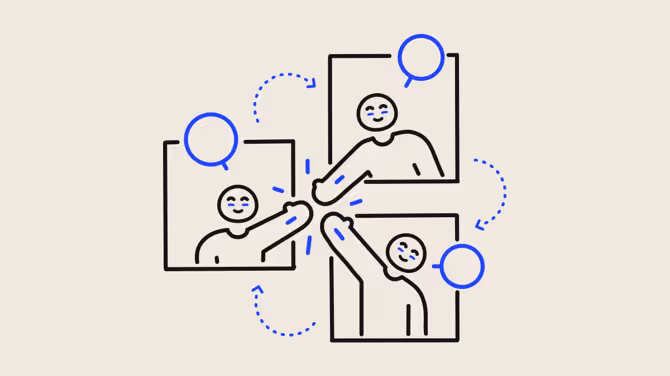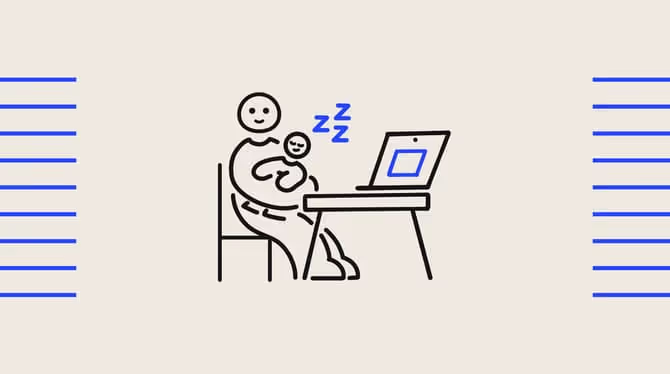Building a united workplace: 6 activities to promote diversity, inclusion, equity, and belonging

From flawed to flawless: 5 steps to leading distributed teams

To be leaders in their industry, modern organizations recognize the need for a workforce representing today's society and its clientele. This is more than just about creating a feel-good story — it's a fundamental prerequisite for businesses to succeed.
As highlighted by Forbes, 80% of workers expect DEIB initiatives (diversity, equity, inclusion, and belonging) from their employers. The payoff moves beyond meeting moral standards, demonstrating that those who do are 35% more likely to see their teams outperform.
But creating a sense of inclusion and unity can be tricky, as there’s no one-size-fits-all approach to building diverse teams. Even the most progressive companies are constantly improving their systems and processes.
In this article, we'll explore what DEIB means today, why it matters, how managers and leaders can create a culture of belonging and inclusion, as well as practical strategies to build stronger, more connected teams.
The new meaning of DEIB (diversity, equity, inclusion, and belonging)
DEIB is the acronym for diversity, equity, inclusion, and belonging. The concept was previously referred to as "diversity and inclusion" but expanded to better reflect a more comprehensive understanding of modern, inclusive workplaces. The addition of equity and belonging acknowledges that representation alone isn't necessarily enough to address systemic inequalities and create true unity within a diverse workplace.
DEIB strategies — along with structured DEI activities — help ensure every team member feels valued, respected, and empowered to contribute in their own unique ways.
Diversity, inside and out
A team's diversity is more than just what's visible — like race, ethnicity, gender identity, and age. It's also about diversity of thought, personal background, and experience. Employers tap into the infinite ideas and perspectives unique individuals can bring by fostering diversity.
A single parent, for example, might have a creative solution to a problem at work thanks to how they've surmounted past challenges. There is so much value in pooling from different cultures and backgrounds.
Equity: Is it the same thing as equality?
Equity is often used interchangeably with equality, but it's not quite the same thing. Equality provides everyone the same support, while equity recognizes that diverse employees might require different levels of support or resources to have the possibility of achieving the same outcomes.
An access ramp would help an employee using a wheelchair get to the same floor level as stairs might for differently-abled team members. Of course, equity isn't just about physical support. This is why disability awareness training is beneficial for everyone.
Inclusion: Beyond representation
Inclusion efforts today go beyond passive representation; they actively promote decision-making that values diverse perspectives and voices from underrepresented groups. Inclusion activities proactively ensure every team member is heard, valued, and respected to feel supported in bringing their authentic selves to work.
Inclusion activities and efforts are more than just giving a seat at the leadership table to women of color, for example. It's about ensuring they get as much time to speak and share as anyone else, and their opinions are given the same weight within decision-making processes.
Belonging: Creating a deep sense of connection
At the core, belonging is more than just about being included. Belonging is when employees feel a deeper sense of connection, acceptance, and camaraderie with their peers — fueling pride, engagement, and collaboration.
Recognizing diverse cultural backgrounds through Black History Month events, LGBTQ+ celebrations, and Employee Resource Groups (ERGs) fosters a more inclusive culture and strengthens team bonding.
Meeting today's DEIB standards begins with the company culture. While many companies put their best efforts into recruiting a more diverse workforce, it’s the experiences created for employees that will ultimately drive their success.
There is no endpoint to improving DEIB — there is always more to learn and more to do.
Why are DEIB activities important for teams?
DEIB strategies are essential to keep employee engagement levels high. By creating an inclusive and respectful team culture, team members experience more fruitful collaboration, share their ideas more confidently, and benefit from stronger team bonding.
Taking a look at some insights from Workleap Officevibe's Pulse Surveys, we can observe a strong positive correlation between a company culture with strong DEIB values and:
- Honest and transparent communication between peers
- Involvement and collaboration opportunities
- Teamwork and manager support
- Responsibility and autonomy
- Work satisfaction
Clearly, diversity and inclusion are inextricably linked to employee engagement, which directly impacts team performance. And to keep employees from diverse personal and cultural backgrounds engaged, there must be a sense of belonging for all.
That's why it’s so essential for organizations to be intentional in developing company cultures that not only value but actively embrace diverse perspectives, backgrounds, and approaches.
Keep reading for strategies and activities that help make that happen!
Who's responsible for promoting DEIB at work?
Ultimately, every individual in the workforce is responsible for making the people around them feel safe, included, and valued. This includes managers, team members, colleagues from other departments, upper leadership — everyone.
That said, values of diversity, equity, inclusion, and belonging need to be firmly established and ingrained within the work culture so that each employee feels compelled and responsible for upholding them.
The question is then: Who sets the standards on DEIB at work?
Setting a culture of DEIB from the top-down
A mistake that’s commonly made across all industries is that organizations leave it up to HR to foster an inclusive work environment. While that's partially true, it is up to all members in leadership roles to support DEIB strategies and be the gatekeepers of their application.
HR members, managers, department leads, and executives should all actively be a part of and promote diversity, equity, inclusion, and belonging.
Managers, in particular, play a critical role in fostering inclusion within their teams. By leading by example, actively listening to employee concerns, and addressing bias and discrimination, managers can create a culture of trust, respect, and psychological safety where all employees feel valued and empowered to succeed. Managers directly impact the employee experience, so they must prioritize inclusion and demonstrate fairness in their management style.
A culture of DEIB starts top-down. Employees look up to leadership, not just for guidance on meeting organizational goals but also on values and ethics. It's up to the leaders to make diversity and inclusion activities central to both the operations and direction of their business and embody these values themselves.
Improving DEIB strategies from the bottom-up
While a company's DEIB values, policies, and structures are set by leadership members, culture comes alive through its employees. It takes effort from both the organizational and the team levels.
By fostering collaborative team dynamics, managers can enlist the ideas and support of their teams to ensure the success of DEIB strategies.
There exist incredible co-creation opportunities to improve DEIB strategies that leverage the perspectives of everyone. Collecting and listening to feedback, hosting diversity and inclusion workshops, creating open discussion forums, and having an internal DEIB committee are some of the ways leaders can leverage bottom-up planning.
Plus, including employees in culture-building efforts makes individuals feel even more respected and valued at work.
Fostering an inclusive environment for remote teams
As most organizations apply some form of remote work structure, be it having virtual teams across timezones or a hybrid work scheme, it's important not to take for granted the impact that DEIB still has on employees who aren't in a physical environment. Virtual diversity and inclusion are crucial for positive employee experiences all around.
While working remotely provides new opportunities to create work-life balance and well-being, it can also reinforce barriers to collaboration and connection if we’re not mindful. Managers must be proactive in addressing these challenges and creating a supportive atmosphere virtually where all team members feel included and engaged.
For example, employees who live alone might benefit from their ability to focus and be productive — but those who are less tech-savvy can end up spending more time navigating new tools, affecting their productivity. Equity in technology access can look different for everyone.
Tips for promoting inclusion and employee engagement across remote team members:
- Remember that even if employees work from home, it's still important to make space to speak out about how they’re feeling and thinking.
- Be mindful that remote team settings impact everyone differently. Offer support, mental health resources, and flexibility with schedules and workloads.
- Keep check-ins regular, even if virtual. Treat these as you would in-person meetings, setting enough time aside and keeping these meeting commitments.
- Encourage team members to check in with each other. Introduce employees to newcomers, and facilitate virtual inclusion team-building activities like social hours so everyone stays connected on a human level.
- Use technology to your advantage! Video conferencing platform features like shared whiteboards and quizzes are ways to amp up virtual diversity and inclusion activities and make screen-to-screen interactions more interesting.
6 DEIB activities to promote diversity and inclusion across teams
Inclusion must exist from beginning to end in an employee lifecycle — from when someone sees your recruiter brand to when they leave your company. After all, DEIB strategies are only as good as their real-life application.
Indeed, it takes proactive efforts to create better understanding, empathy, and appreciation between members of the entire team. Here are diversity, inclusion, equity, and belonging activities specially designed to build stronger, more inclusive teams where conversation is at the core:
1. Foster understanding through perspective-taking
A team's collective differences are often what makes its strength. Recognizing that every employee's life experiences inform how they show up to work lets diverse team members know they can feel comfortable being themselves.
By incorporating diversity team-building activities built around sharing and receiving a variety of perspectives, team members are exposed to different ways to look at a situation. Perspective-taking exercises breed understanding, allowing colleagues to learn how to work better with each other and learn from one another.
Here's how managers can prompt perspective sharing:
- Pair employees from different backgrounds; have them write about challenges they believe the other might face.
- Share and discuss these assumptions, allowing time for responses and personal insights.
- Reflect as a team on surprising takeaways and how they can improve collaboration.
It's easy to forget to take a beat and take perspective in the shuffle of the day-to-day hustle. When managers plan for moments that encourage everyone to consider other people's truths, they help unlock more knowledge than meets the eye.
Workleap Officevibe's one-on-one meeting templates contain great conversation prompts around challenges, diverse talents, and personal motivations.
2. Confront stereotypes head-on
Sometimes, the best approach is a straightforward one. The "I Am, But I Am Not" is an activity suggested by MIT and a great way to break down misconceptions by giving people a chance to self-identify while also addressing the stereotypes that can accompany these identifying factors.
Here's how to structure an “I Am, But I am Not” activity:
- Employees fold a paper (or use a digital notepad) into two columns: “I Am” and “I Am Not,” with “But” in between.
- In the first column, they list personal identifiers (e.g., gender, race, religion, age).
- In the second, they write a false stereotype associated with each (whether the stereo type is positive or negative).
- Employees take turns sharing their statements and discussing them as a group.
By sharing and discussing how everyone lives with labels, good or bad, teams confront unconscious biases together, challenge stereotypes, and promote a deeper understanding of each other's experiences.
3. Walk in someone else’s shoes
There is no better way to create empathy and understanding than to mentally walk in someone else’s shoes. Diversity team building activities that have employees role play with one another help consider different challenges others face and unlock deeper appreciation.
How to lead this activity:
- Have team members share how their diverse backgrounds shape their experiences.
- Pair employees with contrasting profiles (e.g., a local employee with an immigrant).
- Each writes assumptions about their partner’s challenges, then discusses them.
- Pairs share key takeaways, inviting questions and group reflection.
By promoting active reflection in group discussions, managers can guide their teams towards a more empathic mindset, foster positive behaviors between peers, and create a healthier, more inclusive environment for all.
4. Bring bias to the forefront
Unconscious bias is something we all have—it’s human nature. Instead of seeing it as a divide, organizations should treat bias awareness as an opportunity for learning and growth.
One way to foster this awareness is through a bias reflection exercise, which helps employees recognize their own biases in a safe, judgment-free space.
How to run a bias reflection exercise:
- Start by explaining different types of biases (e.g., affinity bias, confirmation bias) and how they can show up at work.
- Ask employees to write down a time they may have made an assumption about a colleague based on background, role, or identity.
- Have employees share (voluntarily) and reflect on how those assumptions may have impacted interactions or decisions.
- Provide real-life workplace scenarios and challenge teams to reframe biased statements into more inclusive language.
By encouraging open, thoughtful reflection rather than calling out bias in real time, teams develop self-awareness, accountability, and stronger inclusive habits. Making these conversations part of regular team discussions helps build a culture of continuous learning.
5. Create equity through fair support
Different employees have different needs. Distributing resources and support among team members in a way that provides fair opportunities for everyone helps employees feel they belong, regardless of their differences.
Here's how managers can promote equity within their teams:
- Discuss workload distribution, development opportunities, and recognition to understand what’s working and what’s not. This is essential to create a feedback loop of what works and doesn't work for some.
- Encourage open dialogue about resource allocation during team meetings or one-on-one sessions to address concerns. Leverage anonymous surveys for unfiltered suggestions or valuable insights.
- Based on feedback, adjust! This helps formulate the right strategies, as even the best managers may have unconscious biases influencing resource allocation decisions.
When managers adapt to their team's needs, it creates an environment where all employees are empowered to succeed.
Of course, transparency and fairness in resource allocation processes are key to promoting inclusivity. It's important to keep the conversation going and it shows employees' perspectives weigh in the decision-making process.
6. Cultivate a sense of belonging through team-building activities
Building a strong sense of belonging is the glue for teams. When employees feel strongly connected to their peers, it generates camaraderie and better collaboration.
Diversity team-building activities focused on community are a great way to enhance team bonding and remind everyone why working at their company is so much more than just "a job."
Here are ideas to cultivate belonging between team members:
- Host virtual events, offsite days, or casual gatherings to encourage connections beyond work.
- Support internal groups or meetups for employees with shared backgrounds or interests.
- Involve everyone in collaborative projects to reinforce teamwork and purpose.
- Encourage employees to share personal stories or cultural traditions through themed team days.
By making team bonding activities as much of a priority as work-related activities, managers promote mutual appreciation and respect. The stronger team members feel about each other, the stronger teamwork and results become.
Expert tips for leaders to build an inclusive workplace
Leaders play a pivotal role in keeping everyone connected and giving everyone an equal say. Inclusive managers listen empathetically to their employees, advocate for them, and break down barriers when needed.
Michelle Kim, CEO of Awaken, a professional coaching and training service, is passionate about changing the face of diversity and inclusion efforts within organizations. Here are her three tips for leaders to build inclusivity and promote diversity in the workplace:
1. See employees as people, not just workers
There’s a tendency to think that an employee's identity in and out of the workplace are separate, but they’re not. Leaders need to demonstrate through words and actions that they acknowledge their employees as people, not just workers, to signal true appreciation for everyone's unique value.
By asking questions, showing keen interest, and providing support for employees' personal needs show that their happiness and safety at work are important to the company.
Tip: Use a survey to find out what religious and cultural days or holidays are significant to your employees from different backgrounds and offer them the time off! Make this a part of company policy.
2. Lead through tension
Remember that a workplace does not exist separately from the world, and world events affect your employees. Whether it touches on race, gender identity, religion, sexual orientation, or other identity-based issues, it’s key for managers to check in with their teams, for leadership members to make formal company statements, and for HR members to create a safe space to hold discussions or offer support.
Tip: Keep your pulse on local and global news. When major events targeting specific communities occur, gather your team and let them know that you recognize the impact. Ask if anyone needs some time off, and remind them you have an open-door policy should they need to talk.
3. Use your power to level the playing field
People look to their leaders to set the norm, demonstrated through decision-making processes, policies, and practices. Managers can model inclusive behavior by addressing non-inclusive language, enlisting in unconscious bias training, listening to and amplifying underrepresented voices, giving credit where credit is due, and delegating work equitably to give everyone the chance to shine.
Tip: There's always room to learn, so annual diversity or disability awareness training sessions are great ways to show that leadership is equally invested in growing with their teams and the world.
Meeting today's DEIB standards: Assessing where your strategies stand with Pulse Surveys
An inclusive work environment, where diverse teams collaborate, leads to higher innovation, employee engagement, and retention. Investing in DEIB initiatives is a no-brainer. So, how can managers assess their strategies to know whether or not there is room to improve?
Feedback tools like safe, anonymous Pulse Surveys gather insights from employees to help inform action plans. Workleap Officevibe's DEIB Survey & Report is specially designed to help calibrate how your team members feel about representation and inclusivity at work.
It's a comprehensive questionnaire with questions like:
- Do you think everyone gets fair treatment within our organization?
- How would you rate our company's inclusive culture on a scale from 1 to 10?
- Do managers offer equal opportunities to people of all different backgrounds?
That said, you can build your own DEIB survey. The secret is to make it a group effort and part of ongoing improvement. When leaders, managers, and employees are all on the same page about prioritizing DEIB, individuals and organizations thrive.
Give HR and managers the clarity, confidence, and connection to lead better every day.


%20(1).avif)


.avif)
.avif)







